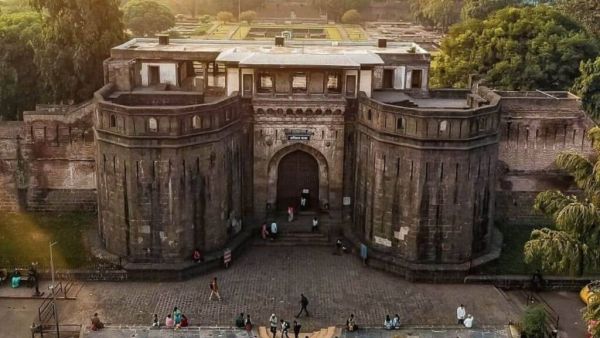
The Shaniwarwar palace of Pune is not only a symbol of the pride and history of the Peshwas, but is also famous for mysterious and horror events. There are strange voices from here at night, and it is said that even today, painful screams echo between the walls of the palace.
Every year thousands of people come to see this fort, but as soon as the sun sets, this historic building becomes a witness to horror stories. In this report, we will tell you whether Shaniwada is really a ghost place or it is just a rumor.
Shaniwada was built in 1732 by Peshwa Bajirao I. This palace once used to be the main center of power of the Maratha Empire. The grandeur of the palace, huge doors, carved walls and fountains used to give it a royal look. But internal conspiracies of the Peshwa family defaming the place. Especially in 1740, the murder of Peshwa Narayan Rao made this fort a ghostly place.
Local people and guards claim that strange sounds at night inside Shaniwada, the doors openly opening and appearing for shadows are common. This is the reason why there is a ban on entry after sunset. There is so much power in the stories of ghosts here that foreign tourists also come to see this place due to fear and thrill.
Narayan Rao was the tenth Peshwa of the Maratha Empire, who was sitting on the throne at the age of only 17. He was the youngest son of Peshwa Nana Saheb Balaji Bajirao and grandson of Bajirao I. He faced political conspiracies due to assuming power at a very young age. It is said that his uncle Raghunath Rao and aunt Anandibai conspired to assassinate him in the greed of power. On 30 August 1773, he was brutally murdered in Saturday Wada. Before dying, he shouted and said, Kaka, Mala Vachwa which is still considered to be echoed in the walls of Shani Vada.
The relationship between Mastani and Peshwa Bajirao is one of the most popular and emotional love stories in Indian history. Mastani, who was a dancer and intelligent princess, was so impressed by Peshwa Bajirao’s valor and personality that the two fell in love with each other. Bajirao made Mastani his life partner despite social opposition and a separate palace was built for him in Shani Vada which was called ‘Mastani Mahal’. This love not only became an example of a true relationship, but is still a matter of curiosity and respect among history lovers.
Mastani died on 28 April 1740. It is said that when Peshwa Bajirao died, Mastani also gave up his life in the same shock. There are many stories about his death, some said that he committed suicide, while some were told that he was kept captive in Pabal village near Pune and he died there. Even today, Mastani’s tomb is present in Pabal village, where people remember their love and sacrifice.
On 27 February 1828, a horrific fire was caught in Shani Vada, which destroyed a large part of this historic fort. The reason behind the fire has not been clear till date, but historians believe that it was either a conspiracy or a result of a serious negligence.
The most surprising thing of this fire was that it took a full 7 days to extinguish it. Buildings made of wood and oil further provoked the fire, which made it difficult to stop it. The fire was so huge that almost the entire structure inside the fort was burnt to gutting, only the walls of the stones remained left.

Even today, Saturday Wada is a prominent name in the list of tourists coming to Pune. Whether it is history of history or common tourists, everyone comes here to know the secrets and events hidden in the walls of this fort. The grand design of Wada and glimpse of the glorious past of the Maratha Empire still attracts people.
People roam in the streets of Shani Vada to feel history closely, look at the pictures on the walls and understand the events of that era with the help of guides or audio tours. Those who come here not only have a ghost feeling, but also have a deep historical feeling, which keeps the legacy of the Maratha dynasty alive.